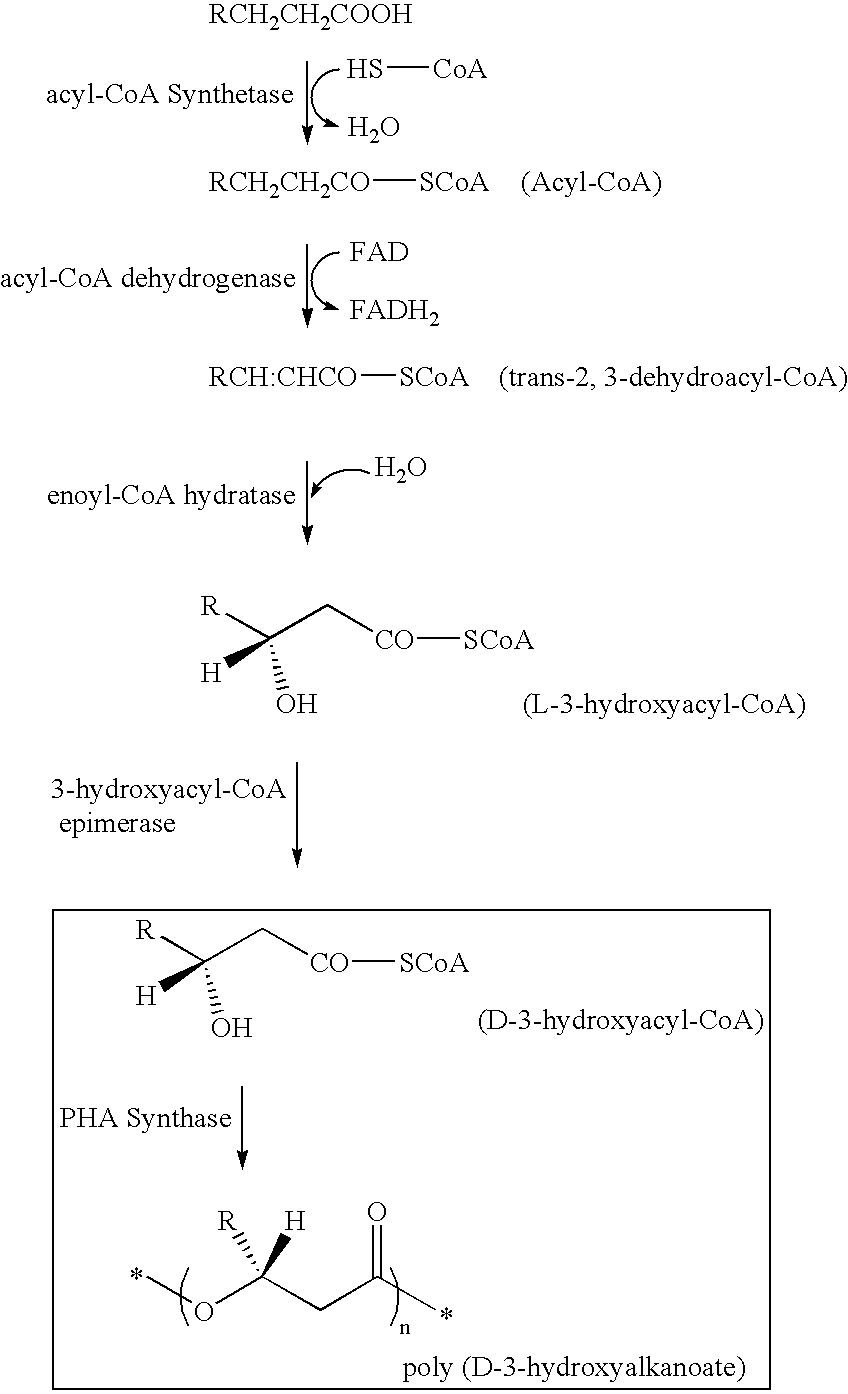Polyhydroxyalkanoate-containing structure and manufacturing method thereof
a technology of polyhydroxyalkanoate and manufacturing method, which is applied in the direction of immobilising enzymes, optical filters, granular delivery, etc., can solve the problems of shortening the turnaround time, and achieve the effect of immobilizing a pha synthas
- Summary
- Abstract
- Description
- Claims
- Application Information
AI Technical Summary
Benefits of technology
Problems solved by technology
Method used
Image
Examples
reference example 1
[0130]Preparation of Transformant Capable of Producing PHA Synthesizing Enzyme, And Production of PHA Synthesizing Enzyme
[0131]A transformant capable of producing the PHA synthesizing enzyme was prepared by the following method.
[0132]The YN2 strain was cultured on 100 ml of LB culture medium (1% polypeptone, 0.5% yeast extract, 0.5% sodium chloride, pH 7.4) at 30° C. overnight, followed by isolating and collecting chromosome DNA using a method by Marmer, et al. The obtained chromosome DNA was fully decomposed with a restriction enzyme Hind III. pUC18 was as a vector and cleaved by the restriction enzyme Hind III. Dephosphorylation of the terminal (Molecular Cloning, 1, 572, (1989); Cold Spring Harbor Laboratory Press.) was carried out, and thereafter DNA Ligation Kit Ver. 11 (Takara Shuzo Co., Ltd.) was used to couple the cleaved site (cloning site) of the vector to the Hind III fully decomposed fragment of the chromosome DNA. A plasmid vector with this chromosome DNA fragment incor...
reference example 2
Synthesis of 3-Hydroxy Acyl-CoA
[0153](R)-3-hydroxy octanoyl-CoA was prepared by the following method, based on Rehm BHA, Kruger N, Steinbuchel A (1998) Journal of Biological Chemistry 273 pp24044-24051, being added with some modification. Acyl-CoA synthetase (manufactured by Sigma-Aldrich Com.) was dissolved in tris-hydrochloric acid buffer solution (50 mM, pH 7.5) containing ATP 2 mM, MgCl2 5 mM, coenzyme A 2 mM, and (R)-3-hydroxyoctanoate 2 mM so as to obtain the resulting solution of 0.1 miliunit / microliter. The solution was incubated in a 37-degree C. of warm bath, and was sampled timely so that progress of a reaction might be analyzed by HPLC. Sulfuric acid was added into a sampled reaction solution to obtain a concentration of 0.02 N to terminate enzyme reaction, and subsequently (R)-3-hydroxyoctanoate that was unreacted substrate was removed by extraction with n-heptane. In analysis by HPLC, RP18 column (nucleosil C18, 7 micrometers, Knauser) was used, elution was conducted w...
example 1
Obtaining of an Amino Acid Sequence Having a Binding Affinity to Copper Phthalocyanine
[0154](1) Copper phthalocyanine (alpha type: Tokyo Kasei Kogyo Co., Ltd.) was suspended into methanol to obtain a concentration of 5 mg / ml. The suspension 1.5 ml was applied to a plate made of polystyrene, and methanol was removed by evaporation, whereby a coating of copper phthalocyanine was fixed on the surface of the plate made of polystyrene. It was confirmed that the coating of copper phthalocyanine fixed was not removed off even if it was washed with TBS buffer (50 mM Tris-HCl pH7.5 150 mM NaCl) including 0.1% Tween-20.
[0155](2) A blocking buffer containing bovine serum albumin (BSA) (0.1 M NaHCO3 (pH 8.6), 5 mg / ml BSA, 0.1 mg / ml streptavidin, 0.02% NaN3) was filled on the polystyrene plate with copper phthalocyanine fixed thereon, and kept still standing at 4° C. for one hour. The blocking buffer was then discarded and the plate was washed 10 times by TBST buffer (TBS buffer +0.1% Tween-20)....
PUM
| Property | Measurement | Unit |
|---|---|---|
| particle size | aaaaa | aaaaa |
| temperature | aaaaa | aaaaa |
| temperature | aaaaa | aaaaa |
Abstract
Description
Claims
Application Information
 Login to View More
Login to View More - R&D
- Intellectual Property
- Life Sciences
- Materials
- Tech Scout
- Unparalleled Data Quality
- Higher Quality Content
- 60% Fewer Hallucinations
Browse by: Latest US Patents, China's latest patents, Technical Efficacy Thesaurus, Application Domain, Technology Topic, Popular Technical Reports.
© 2025 PatSnap. All rights reserved.Legal|Privacy policy|Modern Slavery Act Transparency Statement|Sitemap|About US| Contact US: help@patsnap.com



